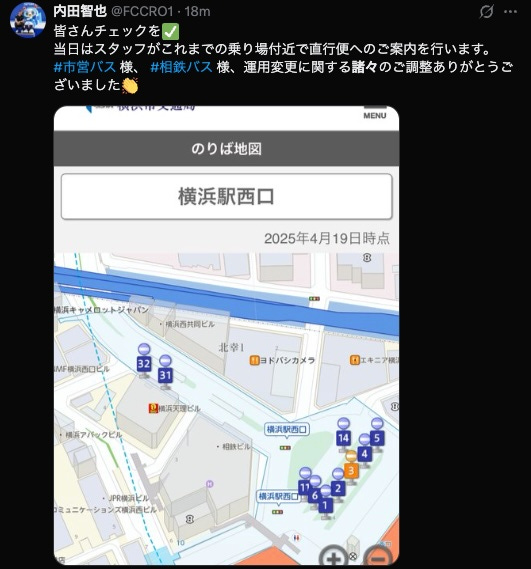例文
Finding and authenticating novel Japanese - How to Japanese - April 2025
This is How to Japanese, a monthly newsletter with something about Japan/Japanese and a dash of いろいろ.
日本・日本語: 例文
I’ve started doing “Japanese Coaching” for USJETAA. I’ve been running my Japanese Reading Group through the group since 2021 (on top of the eight years I ran it through JETAA Chicago; all are welcome to join!), and the leadership wanted to create some additional Japanese language content. I brainstormed a bit with Chris Lindsay of the excellent dictionary and Japanese lessons app Nihongo, and the result is a space where students of the language who are hitting a wall in their studies can come and discuss their struggles. I’m glad to share strategies and help problem solve.
The first session earlier this month filled up in 24 hours, but we’re planning to offer them quarterly: I had so much help during my early years of study—especially learning how to read (which I wrote about in the Japan Times)—that I feel driven to give back however I can. If you’re interested, jump on the waitlist and they’ll notify you when the next session opens.
One of the questions that participants in April asked was, How do you improve your Japanese speaking skills? This is a question that is often coupled with the question, How do you learn Japanese in isolation?
This really is the most difficult question for me to answer, given that I’m living in Japan, working at a Japanese company (albeit surrounded by English speakers). Although I can sympathize, having gone through over a decade in the wilderness: three years of grad school in the mostly Nihongo-less New Orleans and then another nine years in Chicago without a car, which limited me to the city proper, away from the Japanese/Japanese-American population that has shifted to the outer suburbs in the past few decades.
The broader question in these circumstances is not just how to improve your spoken Japanese but how to learn expressions that you cannot generate on your own, how to create novel (to you) Japanese phrases that are authentic and accurate.
The good news is that there is a tremendous amount of Japanese language content on the internet, and much of it is targeted at native Japanese speakers, making it much more reliable than stuff targeted at non-native speakers (including this rag!). I mentioned this in passing back in February 2021:
…there’s an incredibly robust support system for finding answers in Japanese. I’ve previously mentioned Mayonez and Tap-Biz in JT articles, but there’s also Eigobu (apparently now known as “WURK”?), Goiryoku, and a number of others. There are a few sites like Merriam-Webster and the Grammarly blog in English, but I’m not sure they are an exact equivalent.
What is it about Japanese that generates this much content? I think it likely has more to do with SEO and the economics of clicks (which I know very little about) than the inherent difficulty of Japanese, but I think we can all admit that everyone needs a hand with 敬語 every now and then. That’s actually what I recommended previously:
One strategy is simply tacking on the word 敬語 (keigo, polite speech) to any Japanese phrase. This is a quick way to locate a more polite way to say something.
Looking back, I’m pretty happy with the way the 敬語 I created turned out:
厳格な管理のもとご利用いただきますようお願いいたします (Genkaku na kanri no moto go-riyoo itadakimasu yoo onegai itashimasu, We ask that you make use [of this information] with the strictest handling).
However, I mentioned a more general approach, also in passing, back in June 2022:
Incorporate new phrases into patterns you’re already familiar with, and use quotation marks to isolate phrases and make sure your usage resembles what’s out there online. You can usually find examples of what you need by describing it in Japanese and adding 例文 (reibun, example sentences) on the end.
This month, let’s take a look at how that might work in practice.
I didn’t have any words ready to go, so I actively hunted for unfamiliar phrases and came away with this one that I’m curious to explore with you all in real time (more or less): 諸々 (moromoro). Here’s how I would approach figuring out what it means and how to use it on my own in isolation.
First, I recognize the kanji from the word 諸国 (shokoku, various countries), a word I learned in college that has stuck with me. So I had a little bit of solid ground to walk on, but I had no clue how to use 諸々 on its own. I can’t remember the exact phrase at work that sparked my interest in this word, so I’m using the simple strategy I mentioned above: Do a Google search for 諸々 and 例文.
It turns up a number of helpful articles, one of which provides this relatively easy to understand definition:
「諸々」とは、「多くのもの、全てのもの」「さまざまなもの」「多くの人」などという意味を表します。
諸々 means things like “lots of things/all the things,” “various things,” “lots of people” and other phrases.
This is a bit vague and general but still helpful. It essentially means exactly what it means as a prefix in 諸国. Fortunately we also get this helpful explanation that gives us more context:
「多く」「たくさん」「さまざま」などといった表現よりも硬めの印象を与える言葉であり、日常における会話よりも文章やビジネスシーンなどで多く使われる傾向にあります。
諸々 is more formal than expressions like 多く, たくさん, and さまざま, so it tends to be used more often in written language and in the workplace than it does in daily conversation.
Great. Now we know the kind of situations when we can use it and we just need a few example sentences to give us a more solid understanding. Here’s one that gives us firmer ground to stand on:
お菓子やお洋服など、諸々のものをいただきましてありがとうございます
Thank you for the snacks and clothes and other various items.
The person uses 諸々 to modify もの here to express thanks for a range of different items, after giving two specific examples of snacks and clothing.
This is a really helpful phrase because we now know it can be used as an adjective and that we can use it in expressions of thanks. Another example sentence shows us that it can also be used as an adverb. Excuse this overly literal translation, which I think is helpful to understand what the Japanese is doing:
ご相談いただいた件について、諸々承知いたしました
On the topics we consulted about, I have understood all of them.
The verb here is 承知 (shōchi), a really nice polite version of 分かりました (wakarimashita, I understand), essentially, and we can put 諸々 right in front of it to express that we have understood all of the topics that were covered during the 相談.
The whole article is worth a read. It categorizes the usages into お礼 (o-rei, thanks), 連絡 (renraku, communication), 相談 (sōdan, consultation), 承認 (shōnin, confirmation), and 依頼 (irai, request), which is a good way to think about them. The author also notes to be careful using it with superiors because it is inherently vague, although it can be used in 敬語 (keigo, polite speech) expressions. The most important note is that 諸々 is best avoided in apologies because it could suggest that you do not understand what specific error you made.
In these cases, I like to take a look at how the phrase gets used on social media as well to double check that it is indeed part of the vernacular, and not just a made-up online expression. Unfortunately the bad place still has the best corpus of Japanese, so I will occasionally dip in and see what I can find. In this case, I found the very excellent and promising phrase 諸々のご調整ありがとうございます (Moromoro no go-chōsei arigatō gozaimasu, Thank you for all of the adjustments):
I can’t tell exactly what was adjusted other than something transportation related, but I can already imagine a situation in which a colleague or work partner did enough to merit using an expression like this.
I hope this example helps folks out there trying to figure out different expressions. One thing to be wary of is non-native Japanese sources, as I mentioned above. For JLPT grammar patterns especially, you are going to encounter a lot of websites with purportedly authentic usage examples and definitions. I’d err on the side of finding a Japanese source and some actual examples on social media to make sure you’re getting authentic material.
Once you’ve isolated a few of these phrases, it’s critical to lock them into your active Japanese by keeping a record of them somehow. For one possible solution, look no further than my February newsletter about collecting Japanese phrases.
いろいろ
Check out the podcast over at the blog where I have recommendations for Kyoto this month. Let me know if you like these, and maybe I can include other tourist recommendations here and there throughout the year.
This was a really interesting interview with Chris Maple, the designer who made the original Pokemon logo.
I finally beat Final Fantasy VI after 30 years. In the past, I made it pretty far into the World of Ruin but never got all the way to the end. The Pixel Remasters have some nice quality of life improvements that made it pretty easy, but you still need to level the whole party and know how to get past the bosses (which I did with the help of some walkthroughs). Unfortunately I don’t think I have the patience to explore the game as was intended; it must’ve been the Breath of the Wild/Tears of the Kingdom of its time. There’s so much to find, so many little details, pieces of stories in the world. And the writing is pretty sharp! I started Final Fantasy V, and it’s immediately apparent that there was a major jump between V and VI. The latter feels more novelistic, more complicated, and most notably it starts in media res, without much of an inciting incident. We’re just in the story of this multifaceted world populated with a huge number of interesting people.
NBA player DeAndre Jordan is studying Japanese, apparently.
Tiktok failed to load.
Enable 3rd party cookies or use another browserAsahi’s new beer The Bitter-ist is worth checking out! Solid, bock-strength lager with a great hop profile. I was skeptical but came away impressed. It released on April 15, so if you check it out this weekend, it should be super fresh!





